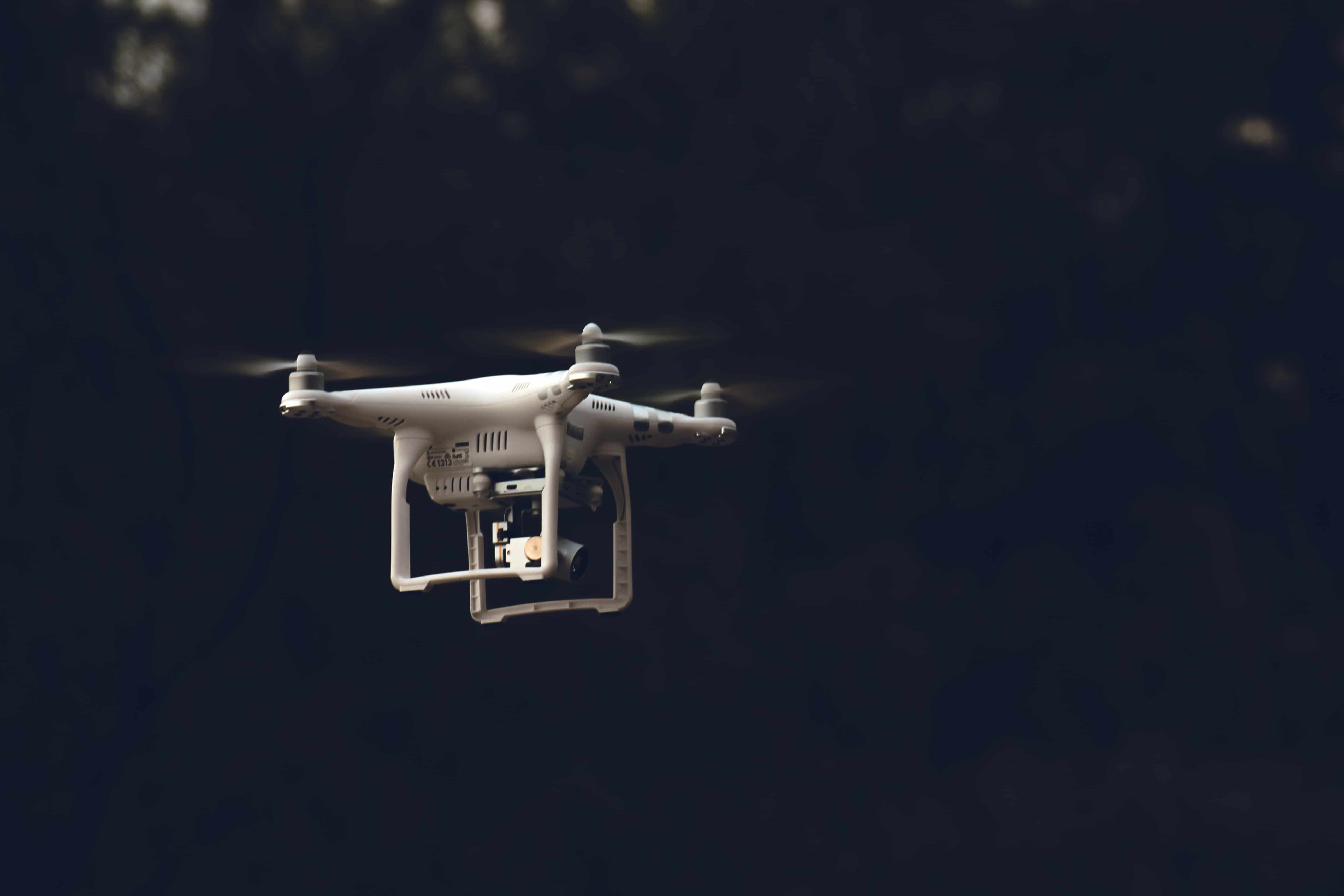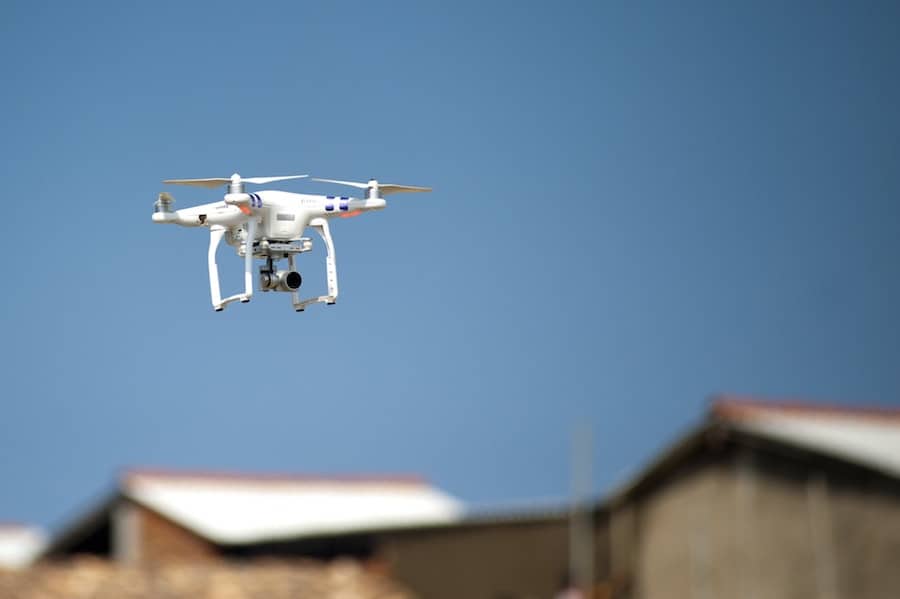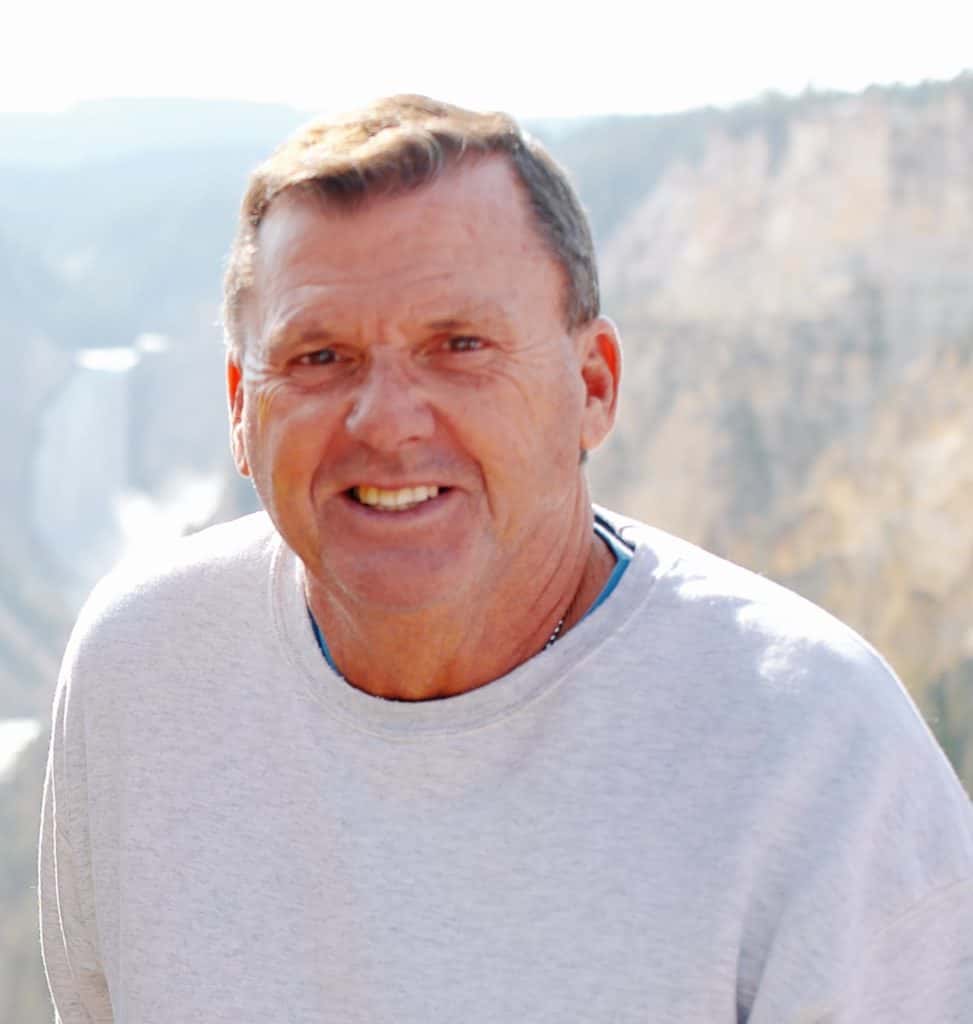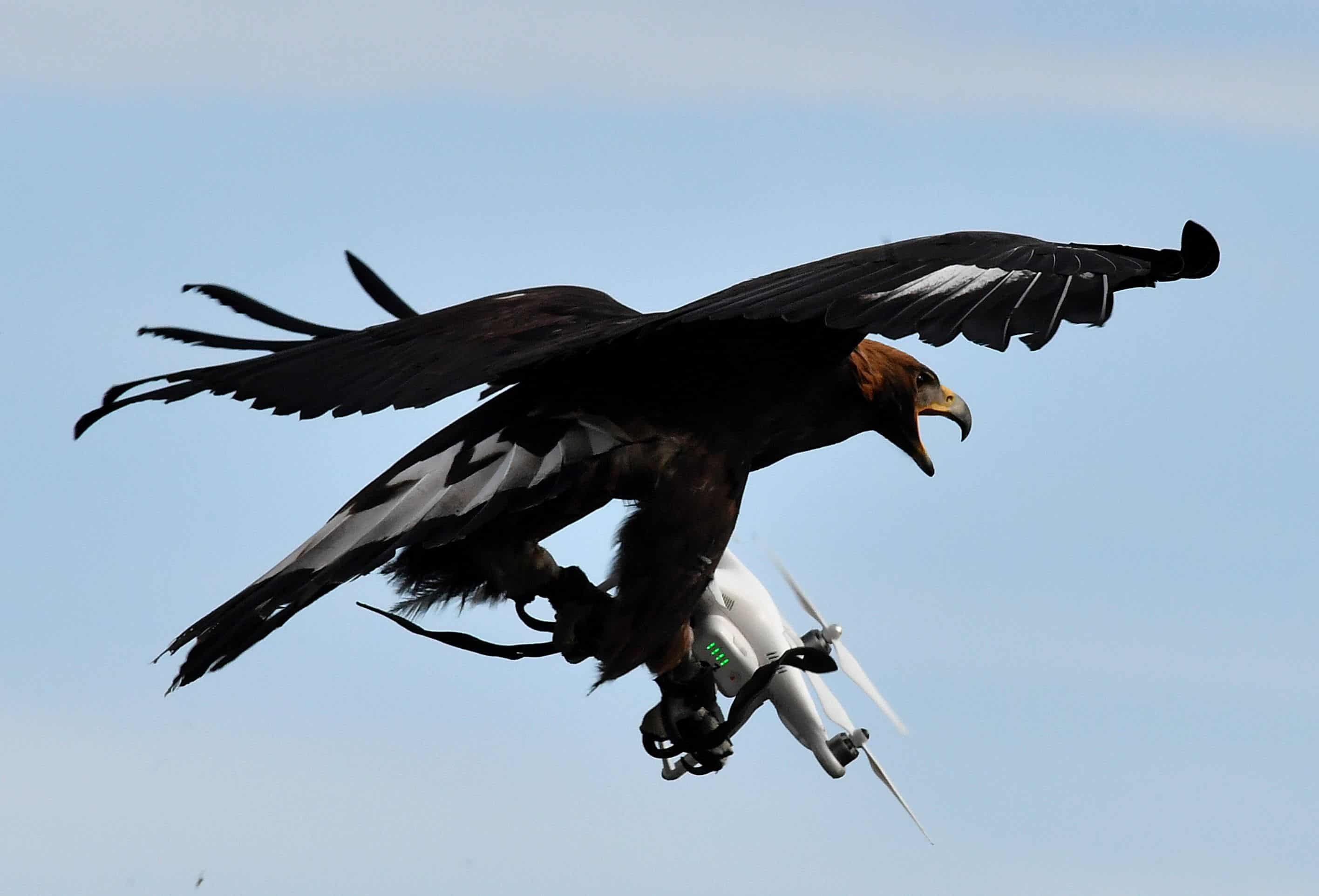If you bought a new drone over the holidays and are flying your drone unprotected, then you are taking many risks. You could crash the drone and lose your entire investment, or even worse, cause some damage, leading to catastrophic liabilities.

It’s not too late to reduce those risks. Read on to find out what we suggest.
Over the holidays, more than half a million new drones (or Unmanned Aerial Systems, the more accurate name used for Drones) were registered in the United States alone. And reportedly, many of these were crashed within days of being unboxed.
Faine Greenwood, an assistant researcher at the Harvard Humanitarian Initiative, has been cataloging some of these using the #dronecrashmas hashtag.
While many drone crashes are unfortunate yet funny, they are not always so.
If you think of consumer drones as toys, don’t assume they can’t hurt you or someone else. And the injuries or potential damage increases as the drone’s size increases.
You may be unaware that drones are aircraft and are treated as such by the Federal Aviation Administration and that there are potential legal penalties for irresponsible drone use. Worse, an errant drone can cause real damage, which can cost dearly.
So what should you do if you just bought a new drone to protect yourself, others around you, and the drone?
If you are a hobbyist or drone enthusiast:
- Get to know the rules governing drone operations
- Register your drone if required
- Get some training and practice flying your drone
- Get a drone protection policy.
- Fly your drone responsibly
If you are going to fly the new drone commercially, then the list of rules is dramatically longer, starting with getting your FAA certification. For more details on flying drones commercially, see this post.

Get to know the rules governing drone operations
Every country and some states have implemented rules that govern what kinds of drones can be flown, who can fly a drone, where they can be flown, and other specific limitations on how they may be used. Most of these rules are good common sense, but others are designed to reduce the risks associated with operating a drone.
You should know the rules that govern where you will be flying your drone because “not knowing” cannot be used in your defense. In fact, not knowing the rules might suggest negligence on your part.
The FAA regulates outdoor drone usage in the United States and has an excellent section on its website dedicated to helping new drone owners get started safely. They also have all the pertinent regulations that might apply at the national level listed there. Many other countries have a similar governing body with rules listed. For a comprehensive list of rules by country and links to their governing bodies, go here: Drone Laws
In the United States, you are allowed to fly drones outdoors under two basic rule options:
First, The FAA Small UAS Rule (Part 107) or FAA Section 333 grant of exemption requires a Remote Pilot Certificate (RPC) from the FAA. In those cases, the pilot must:
- Fly for recreational OR commercial use
- Register your drone
- Get a Remote Pilot Certificate from the FAA
- Fly a drone under 55 lbs.
- Fly within visual-line-of-sight*
- Don’t fly near other aircraft or over people*
- Don’t fly in controlled airspace near airports without FAA permission*
- Fly only during daylight or civil twilight, at or below 400 feet*
*Some of these rules may be waived through a waiver approved by the FAA
Click on the link for more details on flying under this Small UAS Rule.
Second, The Special Rule for Small Model Aircraft (Section 336) does not require an RPC and applies to drones flown for hobby or recreation only. Most enthusiasts or hobbyists will prefer to fly under these rules. The pilot flying under these rules must:
- Register your model aircraft. THE FAA rules do not require registration for drones that are very small and lightweight (at takeoff, including all equipment on the drone), weighing less than 0.55 pounds. For example, the FAA provides an example of the Sky Viper Drone at 4.7 ounces, which would be exempt, while the Parrot Bebop at 14.6 ounces does require registration.
- Follow community-based safety guidelines and fly within the programming of a nationwide community-based organization
- Fly a model aircraft under 55 lbs. unless certified by a community-based organization
- Fly within visual line-of-sight
- Never fly near other aircraft
- Notify the airport and air traffic control tower before flying within 5 miles of an airport
- Never fly near emergency response efforts
If you cannot meet all the requirements of operating under the Special Rule for Small Model Aircraft, and specifically if you are not using the drone for hobby or recreation, then you must follow the Part 107 Rule.
It’s really important that Drone Flyers know and understand the rules under which they are operating. For example, Drone pilots cannot operate in Prohibited Areas, Special Flight Rule Areas, or the Washington National Capital Region Flight Restricted Zone without specific authorization. Such areas are depicted on charts available here.
Additionally, model aircraft operators should be aware of other Notices to Airmen (NOTAMS) that address operations near locations such as military or other federal facilities, certain stadiums, power plants, electric substations, dams, oil refineries, national parks, emergency services, and other industrial complexes. In addition to the previously mentioned link, click here for information regarding published NOTAMS.
The Government will frequently restrict airspace temporarily. These are called Temporary Flight Restrictions (TFR). TFRs are issued over specific locations due to disasters, for reasons of national security, or when determined necessary for the management of air traffic in the vicinity of aerial demonstrations or major sporting events. Do not operate model aircraft in designated areas until the TFR is no longer in force.
Finally, Model aircraft operators should follow best practices, including limiting operations to 400 feet above ground level (AGL).
The FAA has developed a mobile app called B4UFLY, which helps you identify if there are any restrictions on where you want to fly. We highly recommend you download and use it.
Register your drone if required
You should note that registration rules may vary by country, so please check in your own country to see what the specific rules are governing registration.
In the United States, if you only fly the drone indoors, you don’t need to register your drone. Also, as mentioned before, there are some very small drones that are considered below the threshold required for registration by the FAA. Anything larger, if flown outdoors, must be registered, and the registration process is slightly different depending on which rule the pilot will be operating under.
If you operate your UAS exclusively under the Special Rule for Model Aircraft, you must use the web-based registration process to register once and apply your registration number to as many UAS as you want. In other words, for the special rule for Model aircraft rule, the operator is essentially being registered, and every drone they use (which must meet the requirements for operation under this rule) must then be marked with that registration number.
To register under this rule, you need to use the online system here: https://faadronezone.faa.gov/
If you will be operating the drone under the Small UAS Rule, then the owner must register each drone individually, and each registration will cost $5. The owner will be required to provide their name, address, and email address, in addition to the make, model, and serial number (if available) for each Drone.
For Small UAS drone operations, you can register online at https://faadronezone.faa.gov/, or you can use the paper-based registration system with instructions found here: https://www.faa.gov/licenses_certificates/aircraft_certification/aircraft_registry/UA/
One special note. If the Drone you are registering is more than 55 pounds, then you must use the paper-based registration.
Regardless of the rule you meet, when operating outdoors, if the Drone is more than 0.55 pounds, then the Drone must be registered, and the Drone must be marked with the registration number. Just as important, the operator must have a copy of the registration (paper or electronic) with them when operating that Drone.
Get some training and practice flying your drone
We recommend that every Drone pilot get some basic training.
The FAA and several other partners have worked diligently to create a website that we have partnered with and support as an excellent resource for every drone flyer: Know Before You Fly

If you want to become a certified Drone pilot, then the process is much more rigorous and deliberate. You must:
- Be at least 16 years old,
- Be able to read, speak, write, and understand English (exceptions may be made if the person is unable to meet one of these requirements for a medical reason, such as hearing impairment)
- Be in a physical and mental condition to safely operate a small UAS
- Pass the initial aeronautical knowledge exam at an FAA-approved knowledge testing center
The Aeronautical knowledge exam will cover a variety of background and technical topics, including:
- Applicable regulations relating to small unmanned aircraft system rating privileges, limitations, and flight operation
- Airspace classification and operating requirements and flight restrictions affecting small unmanned aircraft operation
- Aviation Weather Sources and effects of weather on Small Unmanned Aircraft Performance
- Small unmanned aircraft loading and performance
- Emergency procedures
- Crew resource management
- Radio communication procedures
- Determining the performance of small unmanned aircraft
- Physiological effects of drugs and alcohol
- Aeronautical decision-making and judgment
- Airport operations
- Maintenance and preflight inspection procedures
Here is a test study guide.
We highly recommend some supplemental training before you attempt the FAA Pilot certification exam.
If you are in the Philippines, you can click here to learn to fly a drone and get the CAAP certification.
Finally, we recommend you practice in a safe and remote place away from other people until you have figured out the basics of your Drone. You should only take your Drone out in public where it can do potential damage.
Get a drone protection policy
Drones are expensive machines that are also fragile and easily damaged. Like any sophisticated precision machine, as it is used, essential components will become worn and require maintenance or replacement. Untimely replacement could lead to accidents.
Notwithstanding all the training and due care, if you are an enthusiast or amateur, you will likely crash your precious Drone. And the damage can be expensive to repair. Replacing batteries and propellers is simple and the least of your worries. Reattaching a connector to a gimbal or camera or replacing one of those could end up costing an arm and a leg.
We recommend everyone consider some protection for their Drone. Fortunately, there are several choices available:
If you are about to buy a drone, we recommend a protected Drone option. These are packages that bundle the Drone with an accidental warranty protection plan. You can find a broad selection of choices.
If you have bought a DJI Drone or accessory, there are several Care Refresh packages available. The care refresh package covers things like water damage and replaces your Drone for a small fee.
Another protection option we like and highly recommend is not limited to any particular manufacturer. Consumer Protection Services is a very reputable company providing an extensive Accidental Warranty Protection program. The program provides a broad set of benefits, including:
Benefits of owning a Consumer Priority Service Protection Plan – Coverage Details:
- Covers Impact Damage and malfunctions
- Covers Drone & Remote Control
- Covers Liquid Damage
- 100% Comprehensive Parts & Labor Protection
- Unlimited Claims
- Fully Renewable, Fully Transferable
- Full International Coverage Wherever You Are!
- Contracts start on the Date of Purchase
Of course, there are some caveats to this protection
- Only Accidental Coverage is available
- Deductibles apply – $100.00-$500.00
- Lost/Stolen products are not covered
- Does not cover detachable/optional camera (ex, a GoPro on an H3-3D gimbal would not be covered)
- Only covers what originally comes with Drone – no aftermarket or add-on pieces covered
- Must have all original parts/pieces when filing a claim. Missing items will not be replaced or covered
Read more about Consumer Protection Services.
Buy a Drone protection plan!
Finally, we recommend all drone pilots have some liability insurance to cover accidental damages to third parties.
If you are flying under the Small Model Aircraft Rule, then we recommend you join the Academy of Model Aeronautics. Their membership, which costs $75 per year, includes a $2.5M personal liability coverage (subject to operating under their rules and limitations).
For commercial operations or flying under the Small UAS Rule, you will need specialized insurance coverage, which we highly recommend. Contact My Drone Services for recommendations on providers in your market.
Fly your drone responsibly
We don’t recommend anyone fly a Drone unprotected. It’s a precision machine that requires some skills to operate.
Small drones have a relatively good safety record (and recent studies suggest they might not pose as much danger to manned aircraft as was first believed). However, they are still capable of causing significant harm in the air and on the ground. Several drone pilots have received fines for crashing their drones into people. In Washington, a Drone pilot was sued after a state investigation found his Drone had struck a woman in the head. Even more heartbreaking was the story of the toddler who lost an eye to a Drone propeller in 2015.
The reality is that near-misses are a lot more common than we believe. All the good things Drones can do may never take off unless everyone with pilot control of a Drone is a responsible pilot.

Tom McKeefery
Partner
Transformation, Technology, Supply Chains, and Operations
